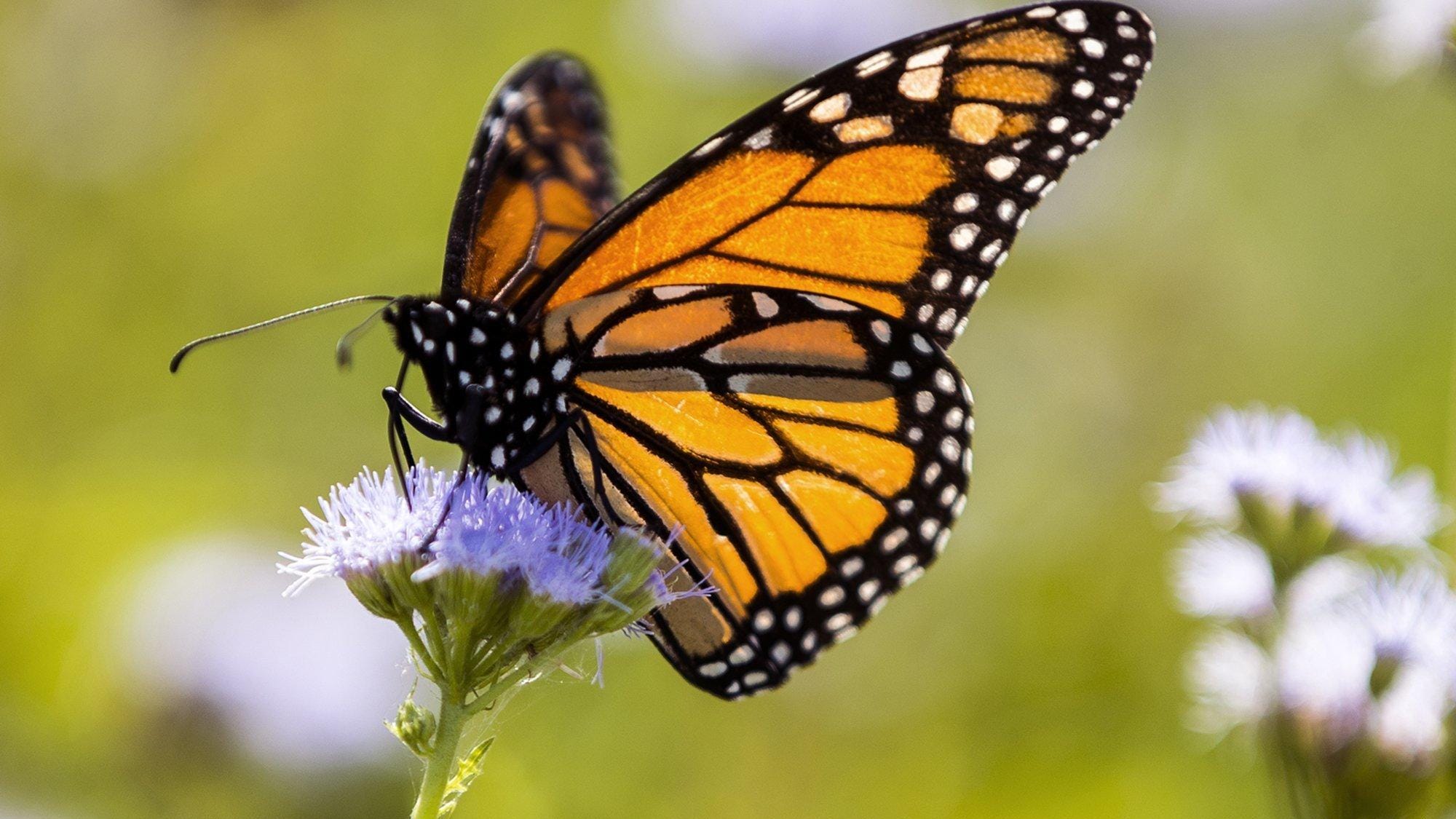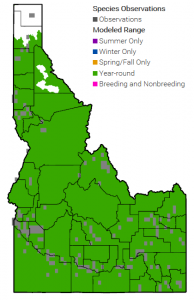ESA Status: Candidate
The North American monarch butterfly (Danaus plexippus) is unique for its long-distance migration and genetically and ecologically different eastern and western populations divided by the Rocky Mountains. Western monarchs migrate through Idaho to the California coast in the fall and depend on a variety of roosting trees, nectar, and milkweed resources. These resources are often found in and along riparian corridors. As mentioned in the 2020 Species Status Assessment (SSA), milkweed is vital to monarch survival, and, in arid climates, it can function as the sole nectar, oviposition, and larval feeding resource. The western population has been censused annually since 1997, and, despite an increasing number of count sites, the SSA notes the population has been generally declining for the last 23 years.
The SSA found, at the current and projected low population numbers, monarch butterflies are more vulnerable to catastrophic events than the species was historically. Additionally, the SSA emphasizes the main threats facing monarch butterflies are habitat degradation and loss from agriculture, logging, insecticide and herbicide use, urban development, drought, and climate change. Idaho is part of the Western Monarch Butterfly Conservation Plan, which includes goals and strategies for overwintering and breeding habitat conservation, education and outreach, and research and monitoring needs.
Staff Contact:
More Information:
Species Profile for Monarch Butterfly – U.S. Fish & Wildlife Service

Photo Credit: USFWS National Digital Library

Map Credit: Idaho Department of Fish and Game
 Official Government Website
Official Government Website